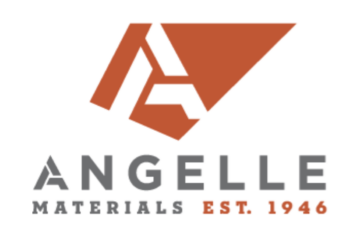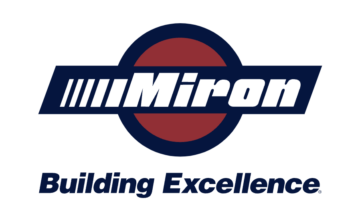fabric, welded-wire—a series of longitudinal and transverse wires arranged approximately at right angles to each other and welded together at all points of intersection.
fabric, woven-wire—a prefabricated steel reinforcement composed of cold-drawn steel wires mechanically twisted together to form hexagonally shaped openings.
face, pilaster—the form for the front surface of a pilaster parallel to the wall.
factor—
factor, bulking—ratio of the volume of moist sand to the volume of the sand when dry.
factor, coarse-aggregate—the ratio, expressed as a decimal, of the amount (mass or solid volume) of coarse aggregate in a unit volume of well-proportioned concrete to the amount of dry-rodded coarse aggregate compacted into the same volume b/b0.
factor, durability— (1) a measure of the change in a material property over a period of time as a response to exposure to a treatment that can cause deterioration, usually expressed as a percentage of the value of the property before exposure; or (2) in ASTM C 666, a measure of the effects of freezing and thawing action on concrete specimens, in which resonant frequency of vibration is used as the property measured.
factor, flow—see cone, flow.
factor, maturity— a factor that is a function of the age of the concrete (hours or days) multiplied by the difference between the mean temperature of the concrete (degrees) during curing and a datum temperature below which hydration stops. (See also degree-hour.)
factor, phi—see factor, strength-reduction (preferred term).
factor, Philleo—a distance, used as an index of the extent to which hardened cement paste is protected from the effects of freezing, so selected that only a small portion of the cement paste (usually 10%) lies farther than that distance from the perimeter of the nearest air void. (See also protected paste volume.)
factor, Powers’ spacing—see factor, spacing (preferred term.)
factor, spacing—an index related to the maximum distance of any point in a cement paste or in the cement paste fraction of mortar or concrete from the periphery of an air void; also known as Powers’ spacing factor. (See also factor, Philleo.)
factor, stiffness—a measure of the stiffness of a structural member; for a prismatic member, it is equal to the ratio of the product of the moment of inertia of the cross section and the modulus of elasticity for the material to the length of the member.
factor, strength reduction—capacity-reduction factor (in structural design); a number less than 1.0 (usually 0.65 to 0.90) by which the strength of a structural member or element (in terms of load, moment, shear, or stress) is required to be multiplied to determine design strength or capacity; the magnitude of the factor is stipulated in applicable codes and construction specifications for respective types of members and cross sections.
factor of safety—the ratio of capacity to demand for a structure or structural element.
failure—a point at which a material stops performing as it was intended to.
failure, adhesive—a rupture of an adhesive bond such that the separation appears to be between the adhesive and one or both of the adherends. (See also failure, cohesive.)
failure, cohesive—rupture of an adhesive bond such that the separation appears to be within the adhesive.
failure, fatigue—the phenomenon of rupture of a material, when subjected to repeated loadings, at a stress substantially less than the static strength.
fair-face concrete—see concrete, fair-face.
false header—see header.
false set—see set, false. (See also set, flash.)
falsework—the temporary structure erected to support work in the process of construction; composed of shoring or vertical posting, formwork for beams and slabs, and lateral bracing. (See also centering.)
fascia—a flat member or band at the surface of a building or the edge beam of a bridge; also exposed eave of a building.
fastener— a device designed to attach, join, or hold two or more objects, one to another, in juxtaposition; commonly readily removed.
fat concrete—see concrete, fat.
fat mortar—see mortar, fat.
fatigue—the weakening or failure of a material subjected to prolonged or repeated stress.
faulting—a crack or joint in a surface along which there has been relative vertical displacement of the two sides parallel to the discontinuity.
feather edge—to smoothly blend the edge of a repair or topping into the existing concrete at an acute angle.
feed, pneumatic—shotcrete delivery equipment in which material is conveyed by a pressurized air stream.
feed wheel—material distributor or regulator in certain types of shotcrete equipment.
felite—a name used to identify one form of the constituent of portland-cement clinker now known when pure as dicalcium silicate (2CaO⋅SiO2). (See also alite; belite; and celite.)
ferrocement—a composite structural material comprising thin sections consisting of cement mortar reinforced by a number of very closely spaced layers of steel wire mesh.
fiber mat—a fibrous reinforcing material composed of chopped filaments (for chopped-strand mat) or swirled filaments (for continuous-strand mat) with a binder applied to maintain form; available in blankets of various widths, weights, thicknesses, and lengths.
fiber-reinforced composite—any composite material consisting of a matrix reinforced by continuous or discontinuous fibers.
fiber-reinforced polymer (FRP)—a general term for a composite material comprising a polymer matrix reinforced with fibers in the form of fabric, mat, strands, or any other fiber form.
fibers—slender and greatly elongated solid materials, generally with a length at least 100 times its diameter, that has properties making it desirable for use as reinforcement.
fibers, carbon—reinforcing fiber with light-weight, high-strength, and high-stiffness characteristics produced by oxidizing organic polymer fibers.
fibers, extreme compression—farthest fiber from the neutral axis on the compression side of a member subjected to bending.
fibers, extreme tension—farthest fiber from the neutral axis on the tension side of a member subjected to bending
fibers, glass—reinforcing fiber made by drawing molten glass through bushings; the predominant reinforcement for polymer matrix composites, known for its good strength, process ability, and low cost.
fibers, polyolefin—manufactured fibers in which the fiber-forming substance is any long-chain synthetic polymer composed of at least 85% by weight of ethylene, propylene, or other olefin units, except amorphous (noncrystalline) polyolefins.
fibers, polypropylene—highly chemically inert, long-chain synthetic polymer; fibrillated and monofilament fibers for concrete reinforcement.
fibers, steel—small discontinuous fibers for random dispersion within cementitious materials; typical fiber shapes include round, oval, rectangular, and crescent cross sections, depending on the manufacturing process and raw material used.
fibers, synthetic—polymeric fibers, such as polypropylene, polyolefin, nylon, polyethylene, polyester, and acrylic, that can be used in fiber-reinforced cementitious materials and protective coating systems.
fibrous concrete—see concrete, fiber-reinforced.
field bending—bending of reinforcing bars on the job rather than in a fabricating shop.
field concrete—see concrete, field.
field-cured cylinders—test cylinders that are left at the jobsite for curing as nearly as practicable in the same manner as the repair material to indicate when supporting forms may be removed, additional construction loads may be imposed, or the structure may be placed in service.
field-molded sealant—see sealant, field-molded.
filaments—individual fibers of indefinite lengths used in tows, yarns, or roving.
filler—a general term for an inert material that occupies space and may improve physical properties or lower cost. (See also extender.)
filler, joint—compressible material used to fill a joint to prevent the infiltration of debris and provide support for sealants applied to the exposed surface.
film—a thin coating over the surface of a material.
fin—a narrow linear projection on a formed concrete surface, resulting from mortar flowing into spaces in the formwork; also a type of blade in a concrete mixer drum.
final prestress—see stress, final.
final set—see set, final.
final setting time—see time, final setting.
final stress—see stress, final.
fine aggregate—see aggregate, fine.
fine-grained soil—see soil, fine-grained.
fineness—a measure of particle size.
fineness modulus—see modulus, fineness.
finish—the texture or appearance of a surface after placement and finishing operations have been performed.
finish, bush-hammer—the finish on concrete surface obtained by means of a bush-hammer.
finish, broom—the surface texture obtained by stroking a broom over freshly placed concrete or other material.
finish, coat—the final thin coat of shotcrete applied prior to hand finishing. (See also flash coat.)
finish, exposed-aggregate—a decorative finish for concrete achieved by removing, usually before the concrete has fully hardened, the outer skin of mortar and exposing the coarse aggregate.
finish, float—a rather rough, granular concrete surface texture obtained by finishing with a float.
finish, granolithic—a surface layer of granolithic concrete which may be laid on a base of either fresh or hardened concrete.
finish, gun—undisturbed final layer of shotcrete as applied from nozzle, without hand finishing.
finish, rubbed—a finish obtained by using an abrasive to remove surface irregularities from concrete. (See also sack rub.)
finish, rustic or washed—a type of terrazzo topping in which the matrix is recessed by washing before setting so as to expose the chips without destroying the bond between chip and matrix; a retarder is sometimes applied to the surface to facilitate this operation. (See also finish, exposed-aggregate.)
finish, swirl—a nonskid texture imparted to a concrete surface during final troweling by keeping the trowel flat and using a rotary motion.
finish, trowel—the smooth or textured finish of an unformed concrete surface obtained by troweling.
finishing—leveling, smoothing, consolidating, and otherwise treating the surfaces of fresh or recently placed concrete or mortar to produce the desired appearance and service. (See also float and trowel.)
fire clay—see clay, fire.
fire resistance—see resistance, fire.
fired strength—see strength, fired.
fired density—see density, fired.
fishtail—a wedge-shaped piece of wood used as part of the support form between tapered pans in concrete joist construction.
fissure—a narrow opening, crack, or separation on a concrete surface.
flame photometer—see photometer, flame.
flange, compression—the widened portion of an I, T, or similar cross-section beam that is shortened or compressed by bending under normal loads, such as the horizontal portion of the cross section of a simple span Tbeam.
flash coat—see coat, flash.
flash point—the lowest temperature of a liquid at which sufficient vapor is provided to form an ignitable mixture when combined with air.
flash set—see set, flash. (See also set, false.)
flat jack—see jack, flat.
flat piece (of aggregate)—one in which the ratio of the width to thickness of its circumscribing rectangular prism is greater than a specified value. (See also elongated piece [of aggregate.])
flat plate—see plate, flat.
flat slab—see slab, flat.
flatwork, concrete—a general term applicable to concrete floors and slabs that require finishing operations.
flaw detection—detection of internal defects including voids, under-consolidated concrete and cracking.
flexible joint—see joint, hinge; Mesnager; and semiflexible.
flexible pavement—see pavement, flexible.
flexural bond stress—see bond, flexural stress.
flexural rigidity—see rigidity, flexural.
flexural strength—see strength, flexural.
fouling—marine growth such as barnacles adhering to a substrate.
flint—a variety of chert. (See also chert.)
float—a tool (not a darby), usually of wood, aluminum, or magnesium, used in finishing operations to impart a relatively even but still open texture to an unformed fresh concrete surface. (See also darby.)
float, angle—a finishing tool having a surface bent to form a right angle; used to finish re-entrant angles.
float, bull—a tool comprising a large, flat, rectangular piece of wood, aluminum, or magnesium, usually 8 in. (200 mm) wide and 42 to 60 in. (1 to 1.50 m) long, and a handle 4 to 16 ft (1 to 5 m) in length used to smooth unformed surfaces of freshly placed concrete.
float, devil’s—a wooden float with two nails protruding from the toe, used to roughen the surface of a brown plaster coat. (See also texturing.)
float, power—see float, rotary (preferred term).
float, rotary—a motor-driven revolving disc that smooths, flattens, and compacts the surface of concrete floors and floor toppings.
float finish—see finish, float.
floating—the operation of finishing a fresh concrete or mortar surface by use of a float, preceding troweling when that is to be the final finish.
flow— (1) time-dependent irrecoverable deformation (see also creep and rheology.); (2) a measure of the consistency of freshly mixed concrete, mortar, or cement paste expressed in terms of the increase in diameter of a molded truncated cone specimen after jigging a specified number of times; or (3) movement of uncured resin under gravity loads or differential pressure.
flow, capillary—flow of moisture through a capillary pore system, such as in concrete.
flow, plastic—increase in the concrete strain of members subject to constant stress, and decrease in concrete stress of members subject to constant strain; an obsolete term (see creep and stress relaxation).
flow cone—see cone, flow.
flow factor—see cone, flow.
flow line—detectable line on a concrete wall or column usually departing somewhat from horizontal, that shows where the concrete in one placement has flowed horizontally before succeeding placement has been made.
flow promoter—see promoter, flow.
flow table—see table, flow.
flow trough—see trough, flow.
flowable consistency—see consistency, flowable.
flowing concrete—see concrete, flowing.
fluid consistency—see consistency, fluid.
fluidifier—an admixture employed in grout to decrease the flow factor without changing water content. (See also admixture, water-reducing.)
fluosilicate—magnesium or zinc silico-fluoride used to prepare aqueous solutions sometimes applied to concrete as surface-hardening agents.
flush water—see wash (or flush) water.
fly ash—the finely divided residue resulting from the combustion of ground or powdered coal in electric power generating plants.
fly ash, Class C—ash normally produced by burning sub-bituminous coal or lignite; usually has significant cementitious properties in addition to pozzolanic properties, particularly those ashes with CaO contents of 15 to 30%.
fly ash, Class F—ash usually produced by burning anthracite or bituminous coal; ashes generally have CaO contents less than 10% and are rarely cementitious when mixed with water alone.
flying forms—see forms, flying.
foam, preformed—foam produced in a foam generator prior to introduction of the foam into a mixer with other ingredients to produce cellular concrete. (See also concrete, cellular.)
foamed blast-furnace slag—see blast-furnace slag (2).
foamed concrete—see concrete, foamed.
fog curing—application of atomized fresh water to cementitious repair materials.
fog room—see moist room.
folded plate—see plate, folded.
footing—a structural element that transmits loads directly to the soil.
footing, combined—a structural unit or assembly of units supporting more than one column.
footing, continuous—a combined footing of prismatic or truncated shape, supporting two or more columns in a row.
footing, sloped—a footing having sloping top or side faces.
footing, stepped—a step-like support consisting of prisms of concrete of progressively diminishing lateral dimensions superimposed on each other to distribute the load of a column or wall to the subgrade.
footing, strip—see footing, continuous.
force, jacking—in pre-stressed concrete, the temporary force exerted by the device which introduces tension into the tendons.
form—a temporary structure or mold for the support of a repair while it is curing and gaining sufficient strength to be self-supporting. (See also formwork.)
form, climbing—a form which is raised vertically for succeeding lifts of concrete in a given structure.
form, drop-panel—a retainer or mold so erected as to give the necessary shape, support, and finish to a drop panel.
form, edge—formwork used to limit the horizontal spread of fresh concrete on flat surfaces such as pavements or floors.
form, paper—a heavy paper mold used for casting concrete columns and other structural shapes.
form, permanent—any form that remains in place after the concrete has developed its design strength; it may or may not become an integral part of the structure.
form, sliding—see slipform.
form, top—form required on the upper or outer surface of a sloping slab or thin shell.
form, vented—a form so constructed as to retain the solid constituents of concrete and permit the escape of water and air.
form, wall—a retainer or mold so erected as to give the necessary shape, support, and finish to a concrete wall.
form and pour—the placement of a repair material through gravity flow into an enclosed space with formwork defining exposed boundaries.
form and pump—the placement of repair material using mechanical pumping equipment into an enclosed space with formwork defining exposed boundaries.
form coating—see coating, form.
form hanger—see hanger, form.
form insulation—see insulation, form.
form lining—materials used to line the interior face of formwork in order to impart a smooth or patterned finish to the repair surface, to absorb moisture from the repair material, or to apply a set-retarding chemical to the formed surface. (See also sheathing.)
form oil—see oil, form.
form paper—see paper, form.
form pressure—see pressure, form.
form release agent—see agent, release.
form scabbing—inadvertent removal of the surface of a repair material because it had adhered to the form.
form sealer—coating applied to the surface of a form to reduce or prevent absorption of water from the concrete.
form spacer—see spacer. (See also spreader.)
form spreader—see spreader.
form tie—see tie, form.
forms—
forms, flying—large prefabricated units of formwork incorporating support, and designed to be moved from place to place.
forms, ganged—prefabricated panels joined to make a much larger unit (up to 30 by 50 ft [9 by 15 m]) for convenience in erecting, stripping, and reusing; usually braced with wales, strongbacks, or special lifting hardware.
forms, moving—large prefabricated units of formwork incorporating supports, and designed to be moved horizontally on rollers or similar devices with a minimum amount of dismantling between successive uses.
formwork—total system of support for freshly placed concrete including the mold or sheathing that contacts the concrete as well as supporting members, hardware, and necessary bracing; sometimes called shuttering in the UK. (See also falsework and centering.)
foundation—the structural elements through which the load of a structure is transmitted to the earth.
foundation, grid—a combined footing formed by intersecting continuous footings, loaded at the intersection points, and covering much of the total area within the outer limits of the assembly.
foundation, mat—a continuous footing supporting an array of columns in several rows in each direction, having a slab-like shape with or without depressions or openings, covering an area at least 75% of the total area within the outer limits of the assembly. (See also foundation, raft.)
foundation, raft—a continuous slab of concrete, usually reinforced, laid over soft ground or where heavy loads must be supported to form a foundation. (See also foundation, mat.)
foundation, strip—a continuous foundation wherein the length considerably exceeds the breadth.
foundation bolt—see bolt, anchor (preferred term).
four-way reinforcement—see reinforcement, four-way.
fracture—a crack or break, as of concrete, or a rock mass; the configuration of a broken surface; also the action of cracking or breaking. (See also crack.)
frame, rigid—a frame depending on moment in joints for stability.
free fall—descent of freshly mixed concrete into forms without dropchutes or other means of confinement; also the distance through which such descent occurs; also uncontrolled fall of aggregate.
free lime—see lime, free.
free moisture—see moisture, free.
free water—see moisture, free. (See also moisture, surface.)
fresh concrete—see concrete, fresh.
fresno trowel—a thin steel trowel that is rectangular or rectangular with rounded corners, usually 4 to 10 in. (100 to 250 mm) wide and 20 to 36 in. (420 to 900 mm) long, having 4 to 16 ft (1 to 5 m) long handle, and used to smooth surfaces of nonbleeding concrete and shotcrete.
friction—force that resists the relative motion of two surfaces in contact.
friction, wobble—in prestressed concrete, the friction caused by the unintended deviation of the prestressing sheath or duct from its specified profile.
friction loss—see loss, friction.
friction pile—see pile, friction.
frog—a depression in the bed surface of a masonry unit; sometimes called a panel.
fugitive dye—a dye whose color fades in a few days to neutral on exposure, usually to ultraviolet rays in sunlight; used to temporarily color membrane-curing compounds so that coverage of the concrete surface can be observed.
full-depth repair—see repair, full depth.
Fuller-Thompson ideal grading curve—see Fuller’s curve (preferred term).
Fuller’s curve—an empirical curve for gradation of aggregates; also known as the Fuller-Thompson ideal gradation curve; the curve is designed by fitting either a parabola or an ellipse to a tangent at the point where the aggregate fraction is one-tenth of the maximum size fraction. (See also grading curve.)
fungicide—a substance poisonous to fungi used to retard or kill mold and mildew growth.
furan resin—see resin, furan.
furring—strips of wood or metal fastened to a wall or other surface to even it, to form an air space, to give appearance of greater thickness, or for the application of an interior finish such as plaster.
fuzzy—a hairy surface appearance caused by protruding broken fibers or filaments.





